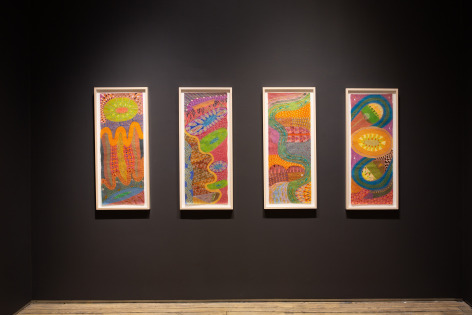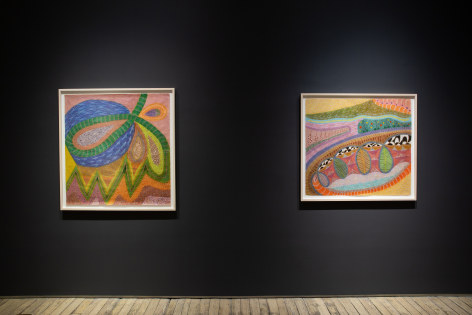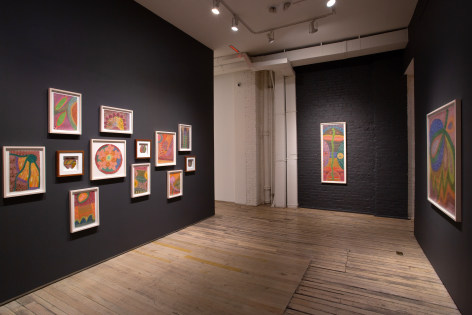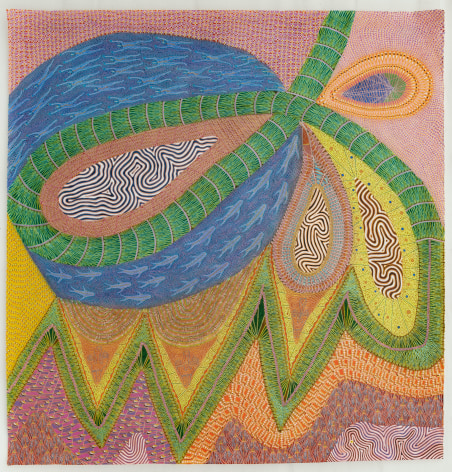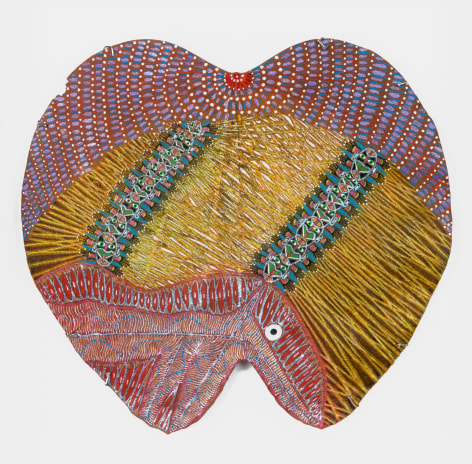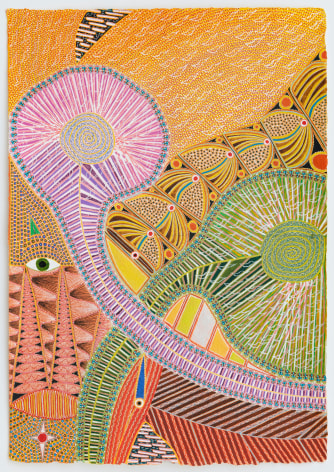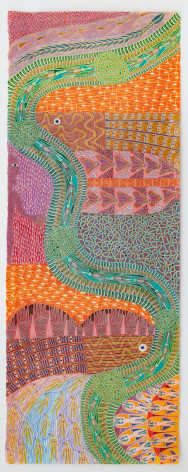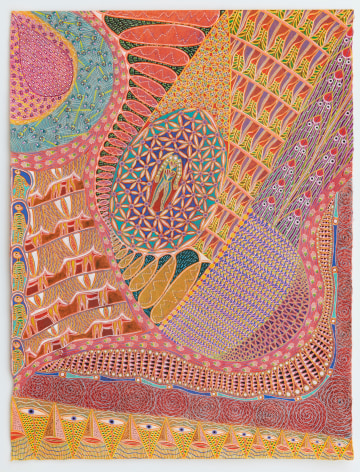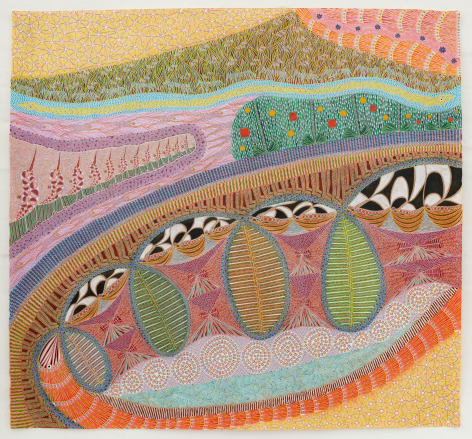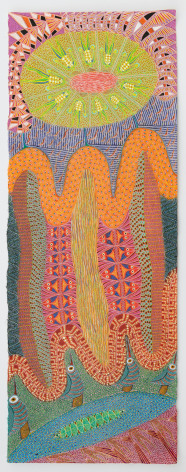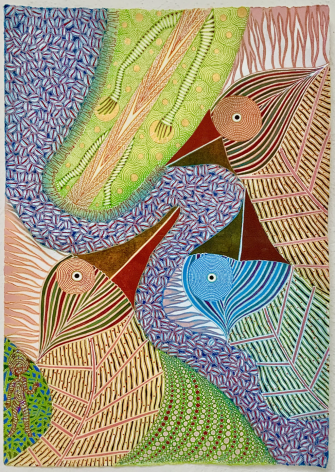Domenico Zindato: By the River of Multiple Suns
April 9 - May 14, 2022
Andrew Edlin Gallery is pleased to present an exhibition of recent works by Domenico Zindato, the artist’s fourth solo show with the gallery. Best known for his masterfully elaborate and vibrant pastel and ink drawings, Zindato (b.1966) continues to expand on the unique visual lexicon he has been developing for nearly 30 years, filling his compositions with layered patterns and recurring motifs which serve as the main ingredients of his mesmerizing topographies.
A self-taught artist, Zindato embarked on his intricate and labor-intensive process in 1993 during a stay in Paris when a friend gave him a set of Sennelier soft pastels. He experimented with the pastels by rubbing the pigments with his fingers directly onto the surface of the work. Similar to some surrealist and visionary artists, Zindato is largely guided by intuition and does not preplan his compositions. The spontaneous act of creating with his fingers in direct physical contact with his paper is part of a transformative experience, which the artist describes as “trance-like.” Comparing his delicate process to knitting or crocheting, Zindato weaves together layers of detail which form interlocking narratives and landscapes. The artist also has been inspired by his travels to indigenous communities in Mexico that use weaving to communicate and record shared experiences.
Zindato attributes the genesis of his creative outpouring to his time in Rome in the mid 1980s, when he conceived elaborate set designs for performances, films, and photographs. His perception of the world as an intricate and enthralling stage was furthered when he moved to Berlin and witnessed the rave electronic dance scene that emerged after 1989. He fondly recalls “the explosive and ecstatic power, the warmth and happiness felt in those frenzied nights.”
His technique matured into a more quiet meditative approach in the mid 1990s when he traveled throughout Mexico, often living out in the open air. Zindato remembers the “expansive sense of wonderment and discovery which emerged, both on a macroscopic and microscopic level, a constant fluctuating and reorganizing of reality, which is how I still feel today.”
Vibrating dots, wave-like ripples, snakes, butterflies, four-legged animals, floating eyeballs, and ghostly human forms coalesce in a kaleidoscopic, holographic continuity. Multiple narratives unfold at once, at times melding into one another, delineated by rhythmic patterning. Zindato refers to his compositions as “mindscapes,” in which imaginary landscapes develop and merge simultaneously. For instance, in This Beauty Apotropaic, outlines of mountainous shapes are undercut by two blue bodies of water in the center of the composition, which resemble streams, with a floating sun-planet at the top left corner. This bird’s-eye-view perspective shifts in the top right corner, where the outline of a caterpillar-like creature in pink emerges, suggesting that we could also be seeing this world from a worm’s eye-view.
Domenico Zindato was born in Reggio Calabria, Italy and has been living in Cuernavaca, Mexico since the mid 2000s. The artist was discovered by the late Phyllis Kind, who first exhibited his work in the late 1990s and represented him until her retirement in 2009. Zindato’s work has been included in important exhibitions, including As Essential as Dreams: Self-Taught Art from the Collection of Stephanie and John Smither, at the Menil Collection in 2016, and was featured in the book, The Hidden Art: Twentieth and Twenty-First Century Self-Taught Artists from the Audrey B. Heckler Collection, co-published by Rizzoli and the American Folk Art Museum in 2017. His art is in the permanent collections of the American Folk Art Museum, New York; Collection de l'Art Brut, Lausanne, the Menil Collection, Houston, the Philadelphia Museum of Art; the Milwaukee Art Museum, and the Whitworth Gallery, Manchester, UK.


